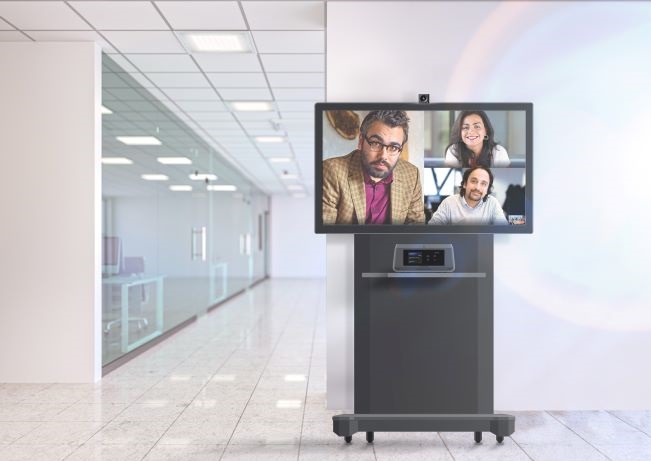As one of the leading vendors for both collaboration/audio-visual (AV) products and office room control systems,
Crestron is uniquely positioned to observe how enterprises are handling efforts to move workers back into the office. The bottom line, according to Nic Milani, executive director at Crestron, is that the path forward is anything but clear.
“Truthfully, it’s just kind of chaos. Everyone’s trying to project and we’re all trying to do the best we can and there’s a lot of conversations,” Milani told me in a recent interview that’s posted on our sister brand
Enterprise Connect’s Virtual Bootcamp: Collaboration for the New Reality, a microsite covering enterprise communications teams’ pandemic response.
However, the openness of technology platforms like Crestron’s play well in situations of such uncertainty because they let enterprises be flexible in adapting to the ever-changing back-to-office picture, Milani noted.
For example, Crestron’s room scheduling system works with software from 20 different partners. This opens the possibility for conference room schedulers to evolve to incorporate contact tracing for enterprises that want this capability as part of their back-to-office plan. Adding digital occupancy sensors or RFID-reader interfaces would further allow the tracking to take place without employees having to touch anything.
“We’re all kind of guessing at this, so having architectures that ultimately are flexible … and can change and shift as we discover more [is] really the key here,” he said.
Milani also speculated that enterprise video use will not drop off much or at all when significant numbers of workers go back to the office. That’s because employees on a corporate campus who might have walked to another building for a meeting in the pre-COVID days will be more inclined to just join a video call with those nearby colleagues.
Enterprises will likely adapt and improve other aspects of their pre-pandemic AV infrastructure, according to a recent blog posted at the website of design firm Gensler. The authors, designers Jordan Goldstein and David Kramer, suggested that, with many employees continuing to work remotely after the return-to-office process begins, the balance of power, or at least focus, will shift within videoconferencing, potentially leading to new technology adoption.
“The pre-pandemic conference room favors those in the room and often renders those participating remotely as observers,” they wrote. “These rooms can be designed to create equality among participants, regardless of physical or virtual presence. Within the workplace, technology like mixed reality can be a bridge between on-site and remote teams during meetings and work sessions.”
The Gensler designers also suggested that enterprises will enlist existing office technologies more extensively to support their ongoing efforts to curb virus spread. For example, digital signage “can provide real time data and information on building health and wellness factors,” they wrote.
“These solutions drive long term value regardless of the pandemic, but clearly provide additional benefits in the near term as we deal with virus containment strategies,” they wrote. “Comprehensive planning and assessment services can build a roadmap to this future, adapted to short term needs but guided by a long-term vision that ensures that initial investments are well spent.”
So, the way forward may not be clear yet, but a few basic guiding principles are clearly in place, focusing on flexibility and long-term total cost of ownership. It’s a start.



